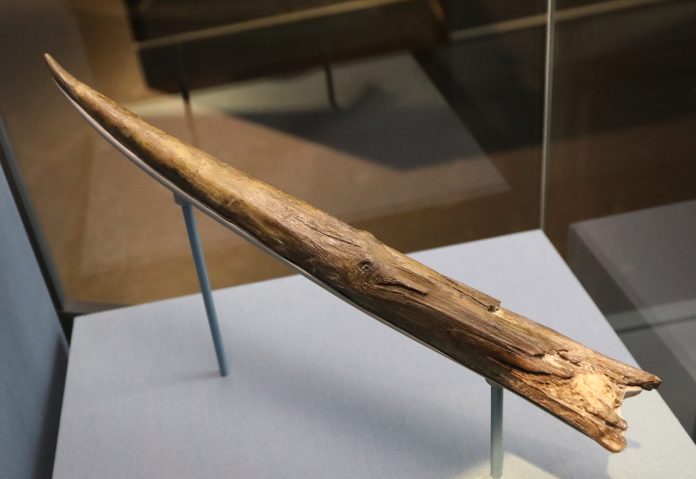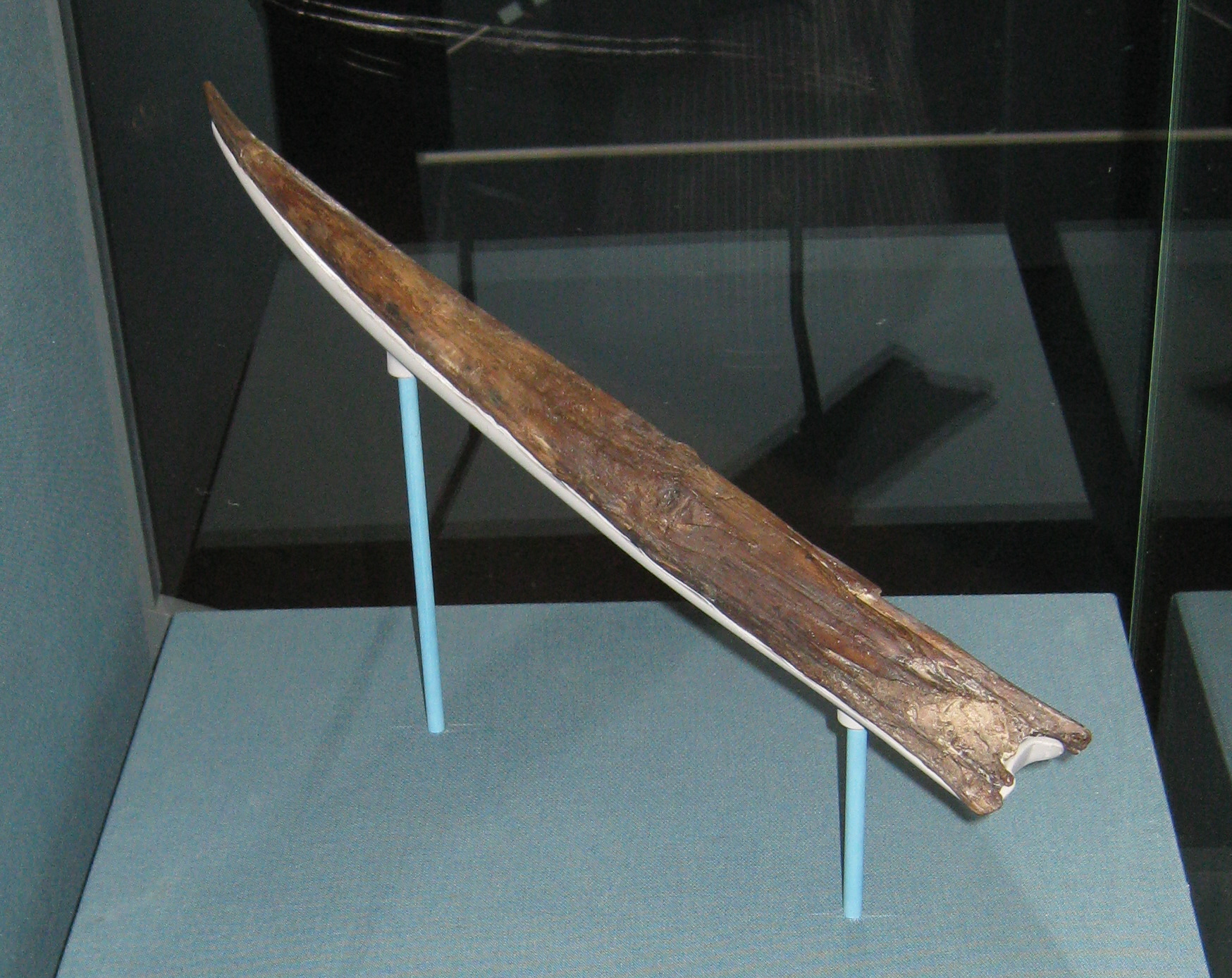
The recent focus on the Clacton Spear, an old wooden object discovered in Clacton-on-Sea, Essex, United Kingdom, has reignited interest and intrigue in archaeological and anthropological spheres.
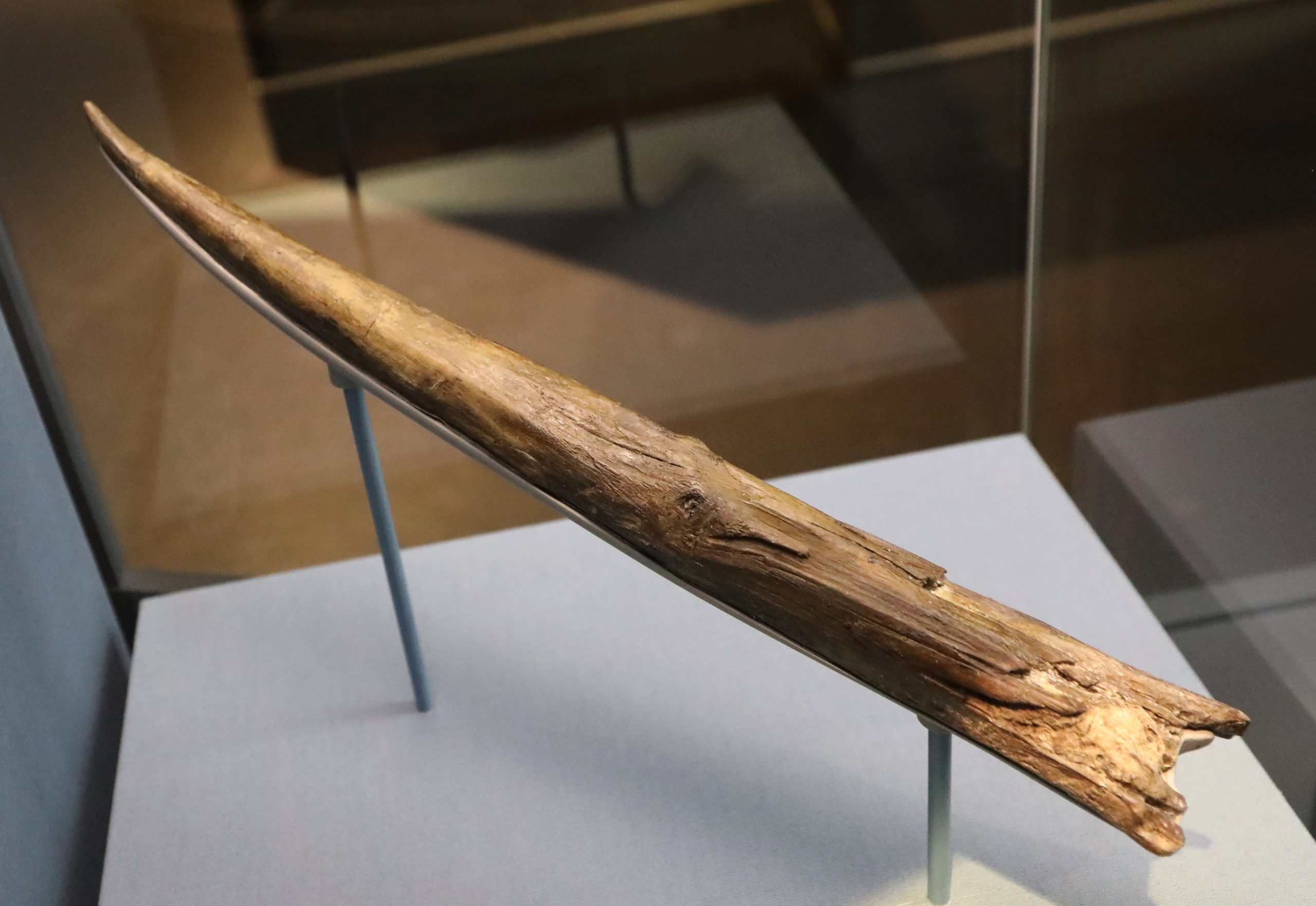
And it is the known oldest wooden tool, the spear has sparked conversations about the cognitive abilities of early hominids and the history of hunting practices.
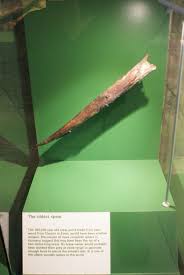
The Clacton Spear, originally discovered by amateur pre-historian Samuel Hazzledine Warren in 1911, has been recognized as a revolutionary find, significantly pre-dating the appearance of modern humans. Made of yew wood, and originally measuring 387 mm in length, the spear has undergone shrinkage and warping over time due to drying, despite efforts to preserve it with wax impregnation in the 1950s.

Recently re-attached to its tip after a detachment, the spear is now displayed at the Natural History Museum in London, where it is labeled to be around 420,000 years old.
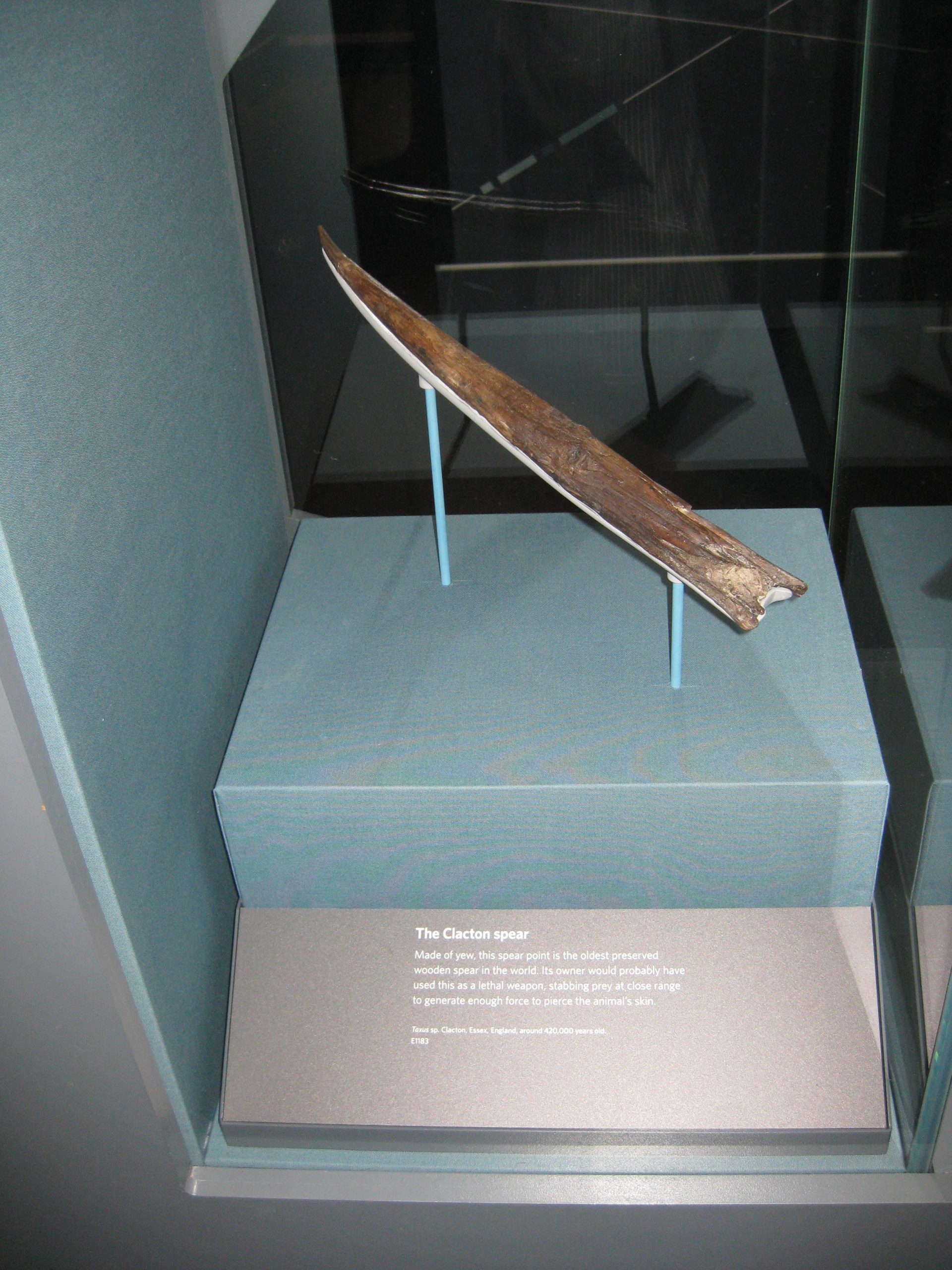
What sets the Clacton Spear apart is not merely its age but its implications for understanding early hominids. Initially thought to be too sophisticated for early hominids, this viewpoint was challenged with the discovery of the Schöningen Spears in Germany. Those spears, nearly as old as the Clacton Spear, demonstrated that early hominids indeed possessed the skills to craft complex tools.
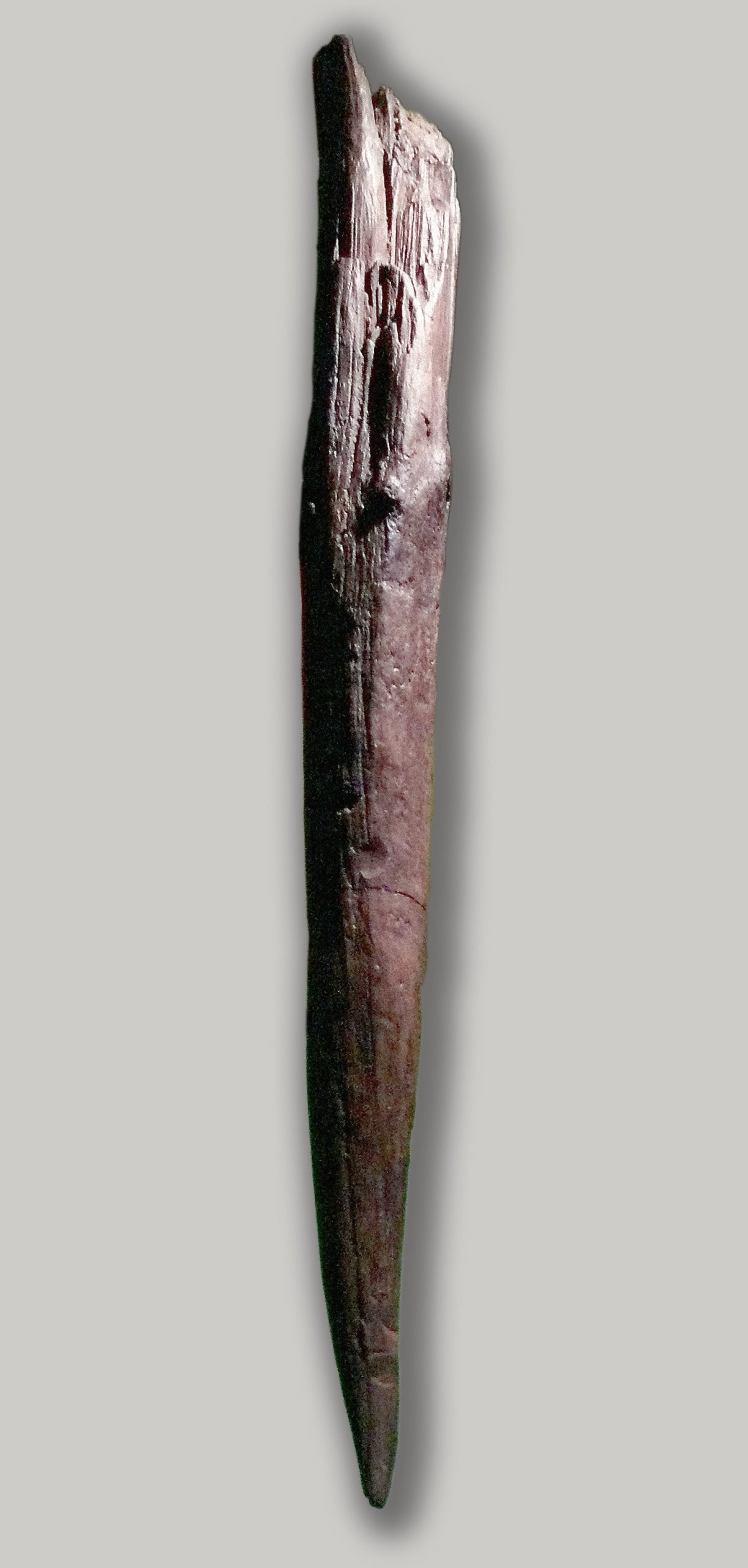
In the past, many academics doubted whether the Clacton Spear could be a spear point due to its age, which predates modern humans. Some proposed that it was a simpler tool such as a digging stick. The discovery of complete spears in Schöningen, however, cemented the idea that early hominids were adept hunters, not merely scavengers as previously thought.
Relevant articles:
– Discovery of Clacton Spear
